It comes when it’s needed and gracefully makes room when its job is done, asking for little and enriching nearly everything with which it comes into contact, from soils to bees and ants and butterflies, deer and birds, and, of course, our yard.
The Partridge Pea has it all. The ferny, mimosa-like foliage of this member of the Pea family (Fabaceae) is a beautiful backdrop for the cheery yellow flowers that attract hordes of pollinators,
its seeds are a favorite food for many birds, including bobwhite quail and endangered prairie chickens, it provides cover for wildlife, is a pioneer plant in poor and disturbed areas, improving soils as a nitrogen fixer, and it quietly gives way as more species colonize the areas that Partridge Pea has improved.
What’s not to love? Well, maybe that this annual will reseed itself vigorously and establish thickets, which may put off some small-yard gardeners, but we have had it for years and it seems easy to control, so we forgive it that. That is one of the features that also makes it useful for erosion control and bank stabilization. It establishes easily where it’s needed and maintains itself without much, or any, help.
In human circles, this plant has been used to ease sore throats, increase endurance, treat malaria and other tropical fevers, and relieve nausea, among other things. Please note, however, that Partridge Pea can be toxic for both people and livestock if taken in sufficient quantity. It has cathartic qualities and can cause bodily distress and even death. If anyone wants to experiment with it, do your homework and use caution. (Good advice for life, too, by the way.)
Now the details: Partridge Pea grows widely in the Midwest, eastern and southern United States in USDA hardiness zones 3-9. Growing up to two feet tall, it has compound alternate leaves with up to 20 leaflets, which can resemble the leaves of the Illinois Bundleflower (Desmanthus illinoensis) or Wild Senna (Senna marilandica—which was once lumped with Partridge Pea in the genus Cassia).
The leaves are somewhat sensitive to touch and will start to close when brushed against. The flowers are bright yellow, appear near the leaf axils and are a bit unusual in that they contain no nectar. That commodity is provided by glands known as nectaries on the petioles of the leaves. (One author surmised that they play no role in reproduction, and “Apparently, they are free lunch-counters, kept open out of pure charity”. Andee Naccarato of the NaplesBotanical Garden, not so convinced of floral charity, suggested that ants attracted to the nectar collect the eggs and caterpillars of sulfur butterflies that would otherwise munch on the foliage.)
In autumn the plant develops green pea-like pods about two inches long containing a row of little flat seeds relished by many birds, including the aforementioned quail (hence, of course, “partridge pea”). The pods become brown and brittle as they age.
Partridge Pea is said to prefer sandy to sandy loam soils with good drainage and plenty of sun, but it is notoriously unfussy. It is found in fields, disturbed areas, glades commonly along roadsides and railroad tracks, and abandoned fields. This is truly one species you can almost plant and forget, except for maybe controlling its spread, where necessary. It doesn’t transplant well, like many plants with long taproots, but the plus side is the drought resistance that gives it. It was one of the plants that soldiered right on through the famous drought of a couple years back here in Missouri. Seeds are readily available from native plant sources and from the wild (check regulations), or just stop on by our house in late fall and we’ll fix you up.
Wherever you get your seeds from, your local insects will thank you. In our yard, Partridge Pea is one of those plants that literally buzzes with activity during its weeks-long blooming period. It is pollinated primarily by long-tongued bees, although we see many other types of insects hanging around the flowers, while nectar-feeders tend to congregate around the nectaries (it is considered an important honey plant). One of the frequent visitors to this plant is the Cloudless Sulphur butterfly, mentioned above, which lays eggs on it and whose caterpillars feed on the foliage and flowers of it and its relatives. It is said that you can tell by the color of the caterpillar whether it has been feeding mostly on the yellow flowers or the green foliage. Maybe so. See below, although these caterpillars are actually on a neighboring Wild Senna.
Partridge Pea improves soils, feeds birds, pollinators and other wildlife, needs little to no maintenance, and is a looker to boot. This one’s a keeper in any native plant landscape.

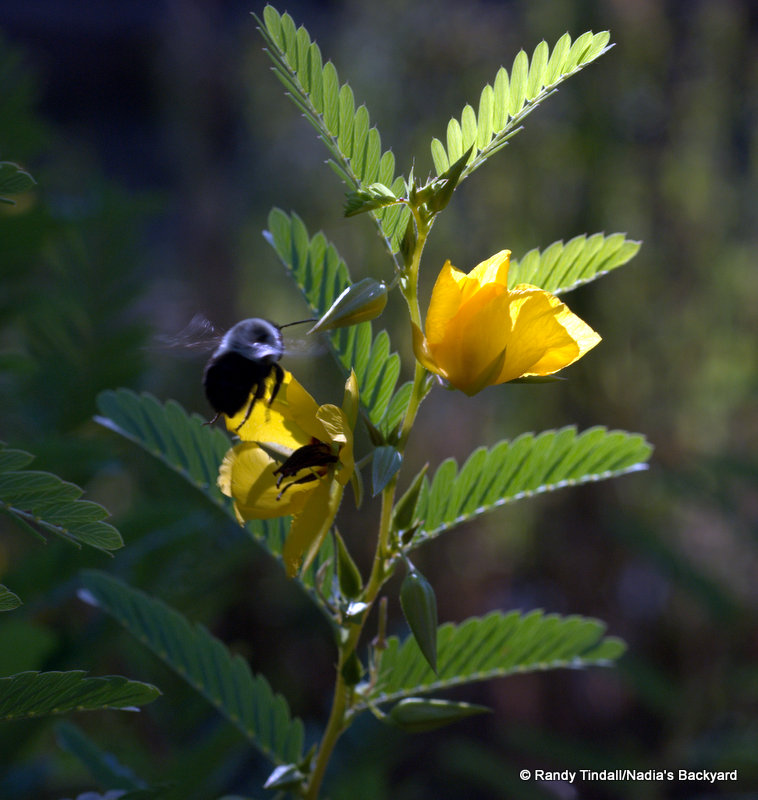
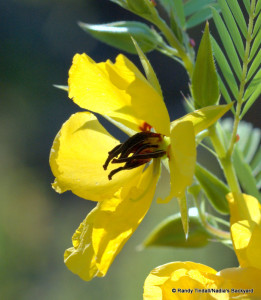
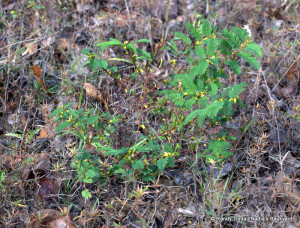
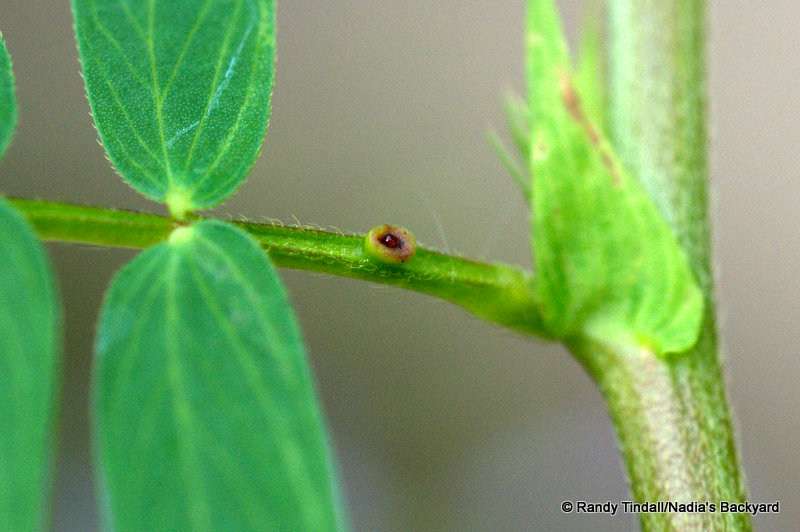
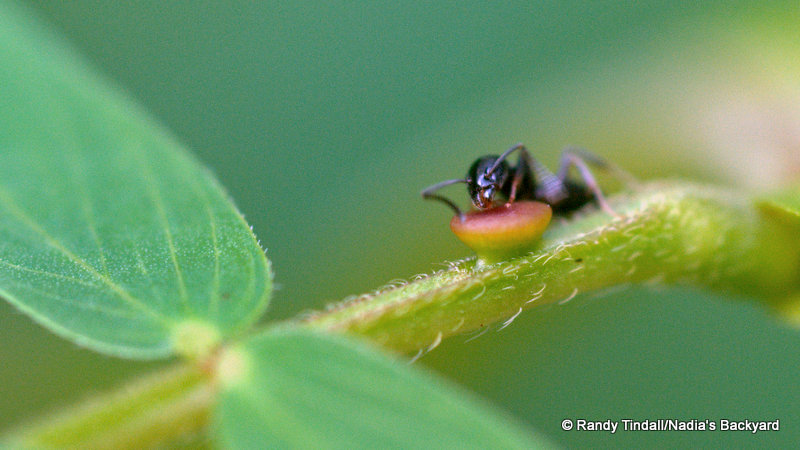
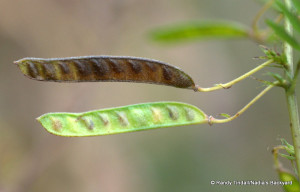
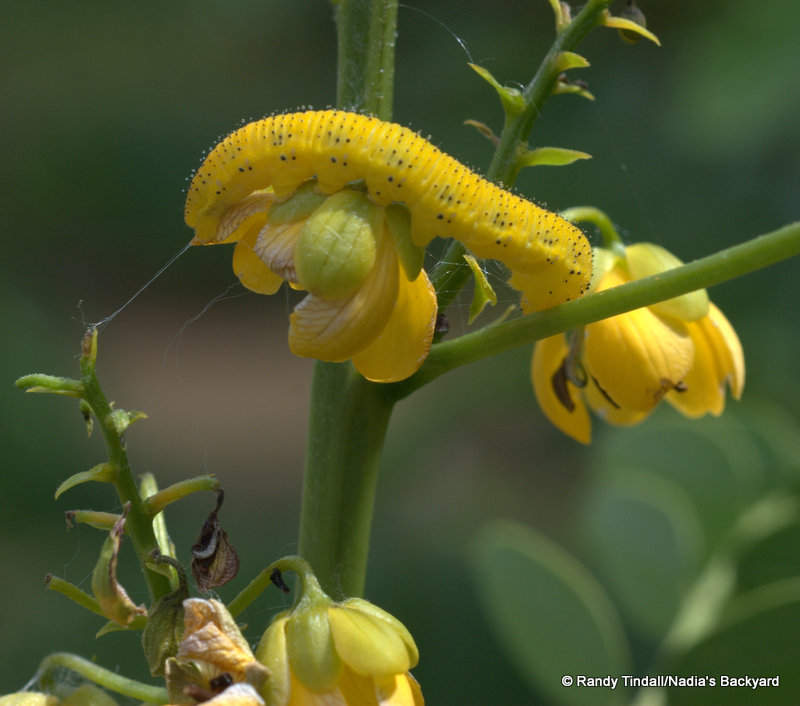
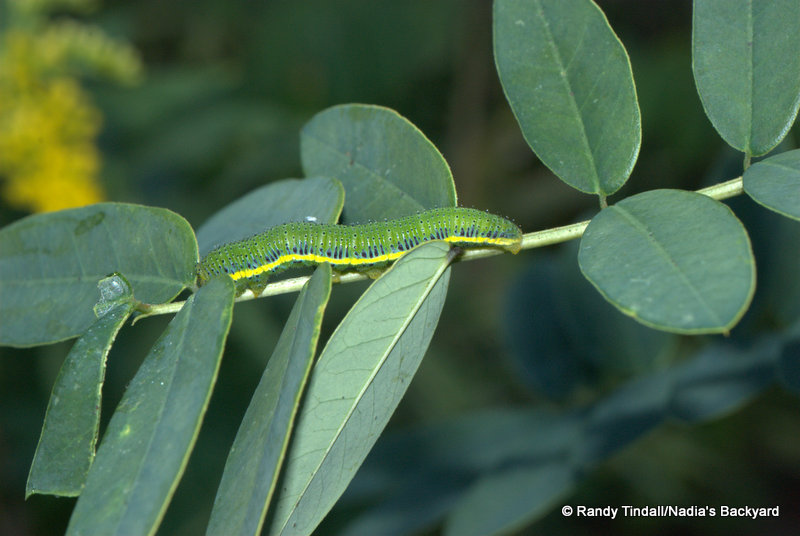
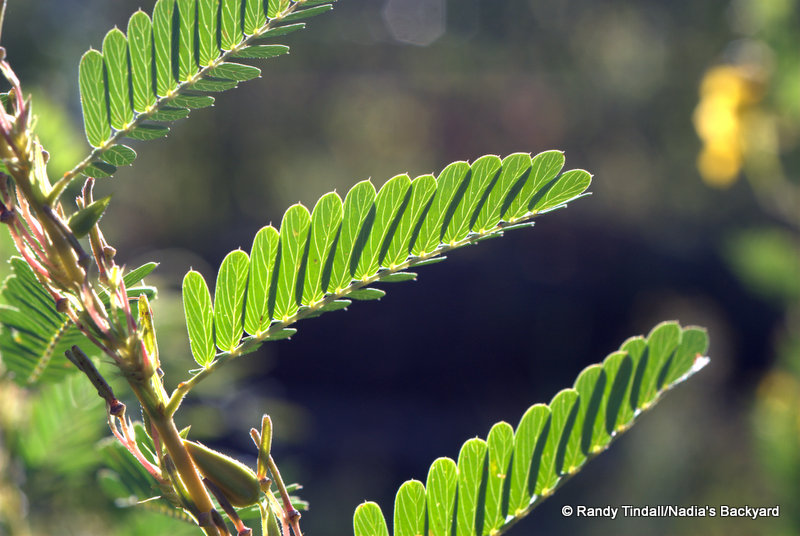
A lovely article, supplying information about the plant and nectaries that is illuminating and beautiful. Many thanks!
Homer Lyon Jr.
Glad you enjoyed it! Thanks for reading, Homer.
We had to mow our pollinator acres because of weeds in July – cut off partridge pea flowers. Will the plant grow back, or does it needs seeds to regenerate? Thanks.
If the partridge pea has been then for more than one season, there are probably lots of seeds there already. Partridge pea is very adaptable and persistent and is often one of the first species to come in to a disturbed piece of land. I expect they will recover. Thanks for reading and commenting!
I wish I would have read this article yesterday before I weeded my squash garden, pulling-up quite a few Partridge Peas in the process. Your beautiful opening sentence really changed me:
“It comes when it’s needed and gracefully makes room when its job is done, asking for little and enriching nearly everything with which it comes into contact, from soils to bees and ants and butterflies, deer and birds, and, of course, our yard.”
You’re right. What’s the point of pulling it out? I probably should be planting it instead. And the extra-floral nectaries (probably evolved so that ants would protect the plants from herbivores) are fascinating. It’s not often that I feel changed, but I certainly do now. Thank you!
Thank you! What a wonderful compliment! Enjoy your partridge peas and thanks for reading!
What is the difference between Partridge Pea and Wild Senna?
I just found this little gem growing wild on my property. I was so happy to find this lovely article thank you.
I only have a couple plants so far but I hope it covers the ridge over the next few years.
Great! Partridge pea is a great multiplier. It should reseed itself and spread and has literally no downside, except for maybe being a little aggressive. Luckly it pulls very easily and is easy to control like that.
Any tips for how to identify partridge pea versus a mimosa tree start? I have a wildflower meadow and my neighbor has Mimosa trees. I’ve been pulling anything and everything that looks like the mimosa tree but then pulled one that had some little yellow flowers and then started to investigate more. Was wondering if there’s a way for me to identify them… Or just let them grow and see if they get flowers?
Never ran across that question before, but I just did an online search for images of both and saw photos of partridge pea seedlings with two large cotyledons at the base, beneath the fringey-looking leaves. I did not see those large oval leaves on pics of mimosa seedlings. For what it’s worth!
https://www.clemson.edu/cafls/research/weeds/weed-id-bio/broadleaf-weeds-parent/broadleaf-weed-seedlings/partridgepea-seedling.jpg